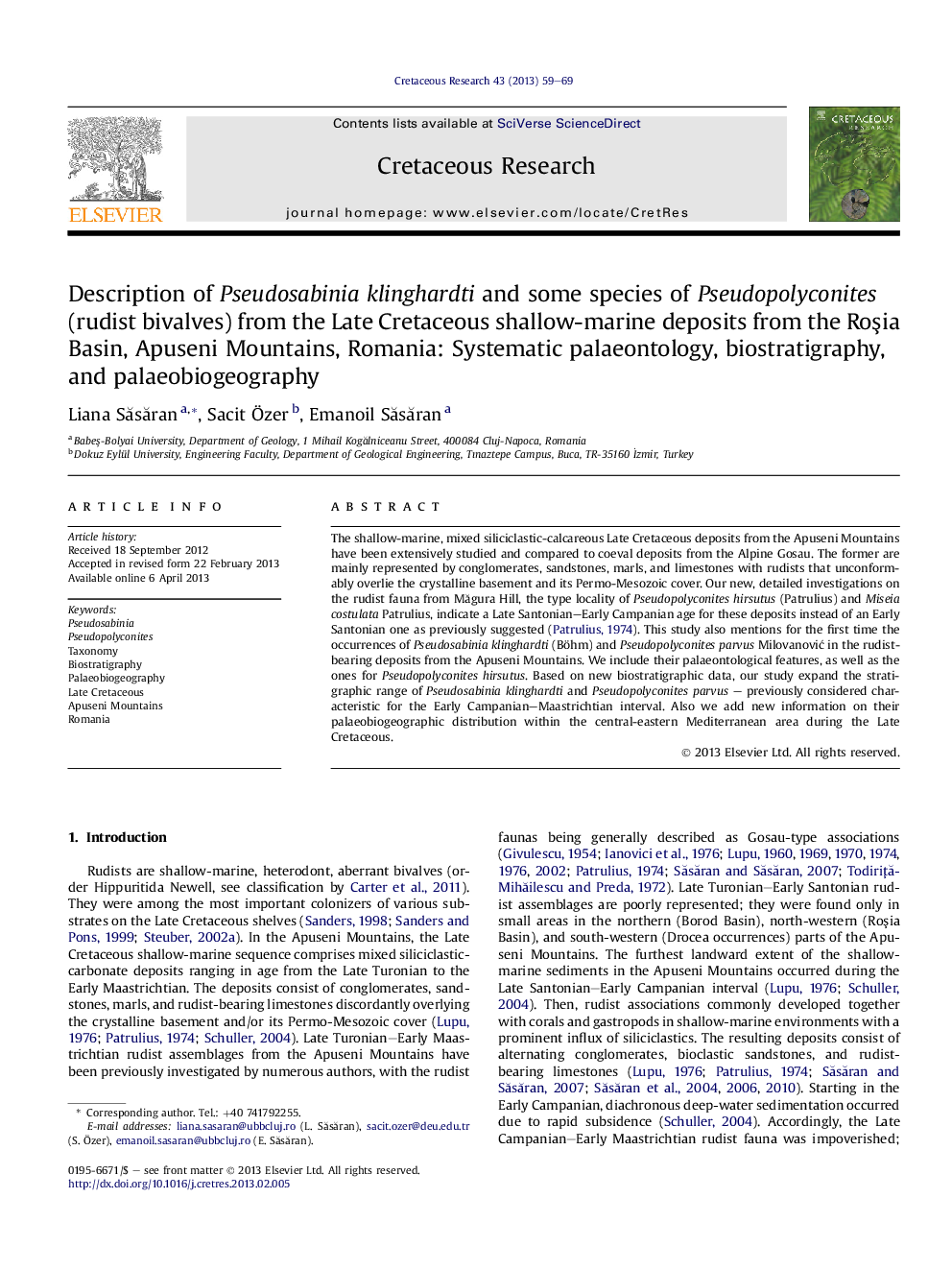| Article ID | Journal | Published Year | Pages | File Type |
|---|---|---|---|---|
| 4747019 | Cretaceous Research | 2013 | 11 Pages |
•We study the rudist fauna from type locality of P. hirsutus and M. costulata.•We reveal a Late Santonian–Early Campanian age of deposits instead of Early Santonian.•Pseudosabinia klinghardti and P. parvus are first time reported in Romania.•In this study we present a taxonomic analysis of these rudist species.•We show the palaeogeography and stratigraphy of these species during Late Cretaceous.
The shallow-marine, mixed siliciclastic-calcareous Late Cretaceous deposits from the Apuseni Mountains have been extensively studied and compared to coeval deposits from the Alpine Gosau. The former are mainly represented by conglomerates, sandstones, marls, and limestones with rudists that unconformably overlie the crystalline basement and its Permo-Mesozoic cover. Our new, detailed investigations on the rudist fauna from Măgura Hill, the type locality of Pseudopolyconites hirsutus (Patrulius) and Miseia costulata Patrulius, indicate a Late Santonian–Early Campanian age for these deposits instead of an Early Santonian one as previously suggested ( Patrulius, 1974). This study also mentions for the first time the occurrences of Pseudosabinia klinghardti (Böhm) and Pseudopolyconites parvus Milovanović in the rudist-bearing deposits from the Apuseni Mountains. We include their palaeontological features, as well as the ones for Pseudopolyconites hirsutus. Based on new biostratigraphic data, our study expand the stratigraphic range of Pseudosabinia klinghardti and Pseudopolyconites parvus – previously considered characteristic for the Early Campanian–Maastrichtian interval. Also we add new information on their palaeobiogeographic distribution within the central-eastern Mediterranean area during the Late Cretaceous.
